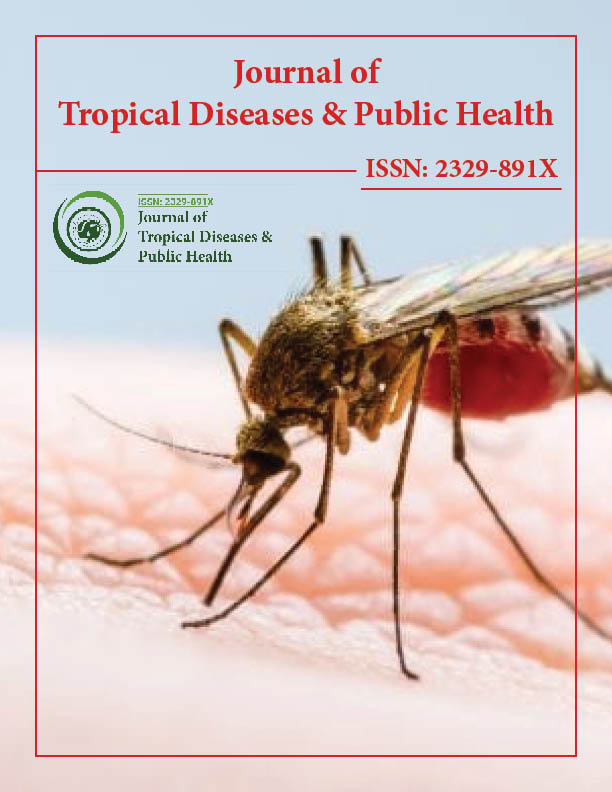Indexed In
- Open J Gate
- Academic Keys
- ResearchBible
- China National Knowledge Infrastructure (CNKI)
- Centre for Agriculture and Biosciences International (CABI)
- RefSeek
- Hamdard University
- EBSCO A-Z
- OCLC- WorldCat
- CABI full text
- Publons
- Geneva Foundation for Medical Education and Research
- Google Scholar
Useful Links
Share This Page
Journal Flyer

Open Access Journals
- Agri and Aquaculture
- Biochemistry
- Bioinformatics & Systems Biology
- Business & Management
- Chemistry
- Clinical Sciences
- Engineering
- Food & Nutrition
- General Science
- Genetics & Molecular Biology
- Immunology & Microbiology
- Medical Sciences
- Neuroscience & Psychology
- Nursing & Health Care
- Pharmaceutical Sciences
Opinion Article - (2025) Volume 14, Issue 2
Socioeconomic Influences on Malaria Prevention Measures in Isolated Tropical Farming Communities
Ayanda Mthembu*Received: 26-May-2025 Editor assigned: 28-May-2025 Reviewed: 11-Jun-2025 Revised: 18-Jun-2025 Published: 25-Jun-2025, DOI: 10.35241/2329-891X.25.13.476
Description
The persistence of malaria in isolated tropical farming communities is shaped not only by ecological conditions but also by social and economic limitations that affect both prevention and treatment. Despite nationwide strategies that prioritize bed net distribution, indoor spraying, and access to antimalarial medication, infection rates remain high in areas where residents face barriers to implementing even the most basic protective measures. Understanding the relationship between economic hardship and preventive behavior is vital for improving intervention effectiveness in such contexts.
In farming regions where families live several kilometers from health facilities or major roads, access to preventive tools is uneven. Government and donor-led programs often focus on population-dense zones, leaving scattered rural households underserved. When distribution campaigns occur, residents may not receive adequate numbers of nets for large or extended families. In some cases, a single net is shared by multiple people, reducing its efficacy. Nets may also be in poor condition due to years of use, lack of replacement, or improper washing methods that degrade the insecticide layer.
Economic pressures influence how resources are prioritized within these households. When choosing between spending on mosquito repellents, extra bedding, or school fees, families naturally invest in more immediate needs. Even when nets are available at subsidized prices through local clinics, the travel costs and lost work time required to obtain them act as deterrents. Furthermore, repellents, window screens, and protective clothing are often viewed as luxuries rather than essentials in households with limited cash flow.
Behavioral practices tied to agricultural work further complicate prevention. Farming families often begin work early in the morning and continue after sunset, periods during which Anopheles mosquitoes are active. In open fields, without physical barriers or protective clothing, workers are highly exposed to bites. Children may accompany parents into fields or remain at home in unscreened dwellings, both scenarios presenting high transmission risk. Evening activities such as cooking outdoors or attending local gatherings increase contact with vectors.
The educational background of residents also affects malaria prevention and response. Misconceptions about the disease, including confusion with other febrile illnesses or reliance on herbal treatments, may delay diagnosis and increase transmission. In some areas, there is skepticism about the efficacy of bed nets, with complaints ranging from heat and discomfort to fears that chemicals used on the nets cause skin problems. These beliefs are often reinforced by a lack of visible government presence or consistent health messaging.
Local health systems in remote farming zones are typically under-resourced. Clinics may operate with minimal staff, inconsistent medicine supply, and outdated equipment. Health workers, though committed, often serve multiple roles and cannot devote sufficient time to patient education or follow-up. In some communities, health outreach occurs only during periodic visits from mobile teams. When patients develop symptoms, the delay in reaching a clinic can result in complications, particularly for pregnant women and children.
Conclusion
In the context of persistent poverty and geographic isolation, malaria prevention cannot be separated from broader development issues. Improving transportation, communication, and rural livelihoods will have indirect but important effects on health behaviors. As farming families gain greater control over their resources and access to information, their ability to protect themselves from infection will improve. While technological tools such as diagnostic apps and solar-powered refrigeration for medicines show potential, their reach depends on stable infrastructure and local knowledge.
Citation: Mthembu A (2025). Socioeconomic Influences on Malaria Prevention Measures in Isolated Tropical Farming Communities. J Trop Dis.13:476.
Copyright: © 2025 Mthembu A. This is an open-access article distributed under the terms of the Creative Commons Attribution License, which permits unrestricted use, distribution and reproduction in any medium, provided the original author and source are credited

